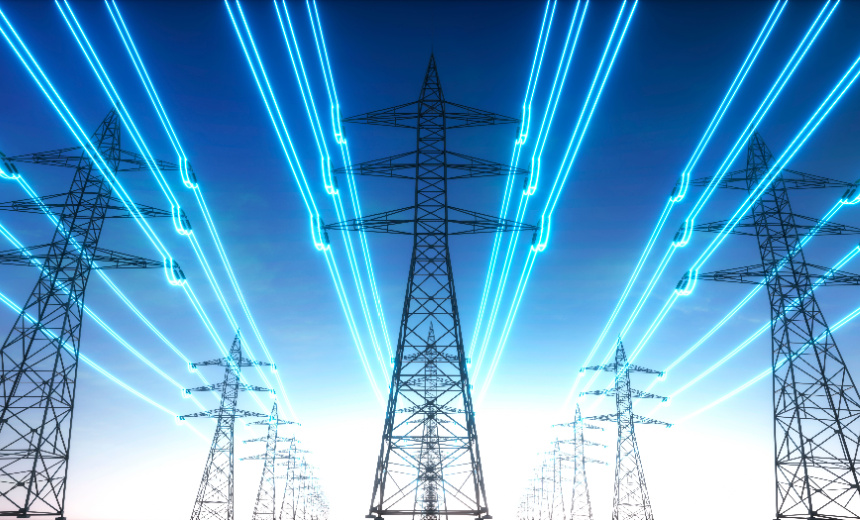Governance & Risk Management
,
Operational Technology (OT)
CKW’s Yann Gosteli on Optimizing Communication Networks With Future-Proof Tech

For decades, electricity grids have powered homes, factories and other industrial facilities, delivering energy from power stations to where it’s needed. But, as the world digitizes, utilities face the challenge of modernizing their traditional network infrastructures. The rapid growth in data generation requires higher network capacity, flexibility and scalability.
See Also: 2024 State of Industrial Networking Report
Centralschweizerische Kraftwerke, or CKW, one of Switzerland’s major energy service providers, tackled the challenge head-on. Historically reliant on time-division multiplexing, or TDM, for its operational communications, CKW launched the Grid Communication 2020+ program in 2017 to build a future-proof telecommunications infrastructure.
TDM is a method of transmitting multiple data streams in a single signal by separating the signal into many segments, each having a short duration. Each data stream is reassembled at the receiving end based on the timing. But, TDM cannot handle the volume and variety of today’s data communications.
“The new smart energy grid is designed to meet three essential requirements: cybersecurity, a unified infrastructure and a solid foundation for the digital grid of tomorrow. Today, we are very close to achieving that goal,” said Yann Gosteli, head of secondary systems at CKW.
Balancing Legacy Systems With Future-Ready Technology
CKW’s digital transformation was no small feat. One of the major hurdles was designing a network architecture that could support legacy technologies to protect existing IT investments, while also having the lifespan and scalability to handle future technological advancements.
The company transitioned from its long-standing Synchronous Digital Hierarchy network to a more advanced Multi-Protocol Label Switching – Transport Profile, or MPLS-TP, technology. This shift enabled the gradual migration of critical services, such as supervisory control and data acquisition and teleprotection, which are the key components of its operational network. This strategic move is at the heart of CKW’s vision for a communication technology that can meet both current and future needs.
Reinventing the Grid for a Decentralized Future
The grid has evolved to accommodate decentralized and renewable energy sources, such as large wind farms and rooftop solar installations. This shift demands a mix of new and traditional assets for energy generation, transmission, distribution and storage, creating a complex landscape for utilities, such as CKW, to navigate.
CKW’s transformation wasn’t just about adopting new technologies. It also required maintaining older systems while incorporating innovations, such as IEC 61850-based teleprotection. This was crucial because the transition needed to ensure that the legacy systems remained operational as new technologies, such as the organization introduced EV charging and wireless charging.
In 2023, CKW announced a collaboration with Hitachi Energy. The company tested and advanced its IEC 61850-based protection systems across substations. “We successfully conducted a multi-vendor lab test using Sampled Values and GOOSE messaging for communication between substations over an MPLS-TP network,” Gosteli said. “This demonstrated the potential of using standardized communication protocols between devices from different manufacturers.”
This progress is pivotal for CKW as it enables the utility to move away from proprietary protocols, thereby increasing flexibility and reducing vendor dependence. Following these successful lab tests, CKW plans to conduct field tests by the end of the year to validate the new protection schemes in real-world environments, marking a transition from the testing phase to broader implementation.
Ensuring Security and Reliability
As electricity grids become more digital and interconnected, cybersecurity has emerged as a pressing concern. Power grids face growing risks from cyberthreats, with malicious actors targeting critical infrastructure to disrupt operations, cause outages or compromise the system’s reliability and safety.
Security was, therefore, a top priority in CKW’s transformation. The company introduced several key measures, including enhanced network segmentation through virtual private wire and LAN services, solution hardening, and penetration testing. Quantum-safe encryption was also implemented to protect sensitive data.
A key improvement was ensuring the availability of accurate time-of-day information to substations, which is essential for many digital solutions. CKW achieved this by implementing a network clock functionality, which allows the communication network to provide highly accurate time data from centralized grandmasters to end devices. “This system replaces our reliance on vulnerable GNSS systems for time synchronization,” Gosteli said.
CKW’s digital transformation highlights how utilities can successfully upgrade their legacy communication infrastructure while embracing advanced technologies. “With AI, machine learning and quantum-safe encryption forming the backbone of the company’s operations, we are well-positioned to meet the growing demands of a rapidly changing energy landscape,” Gosteli said.
